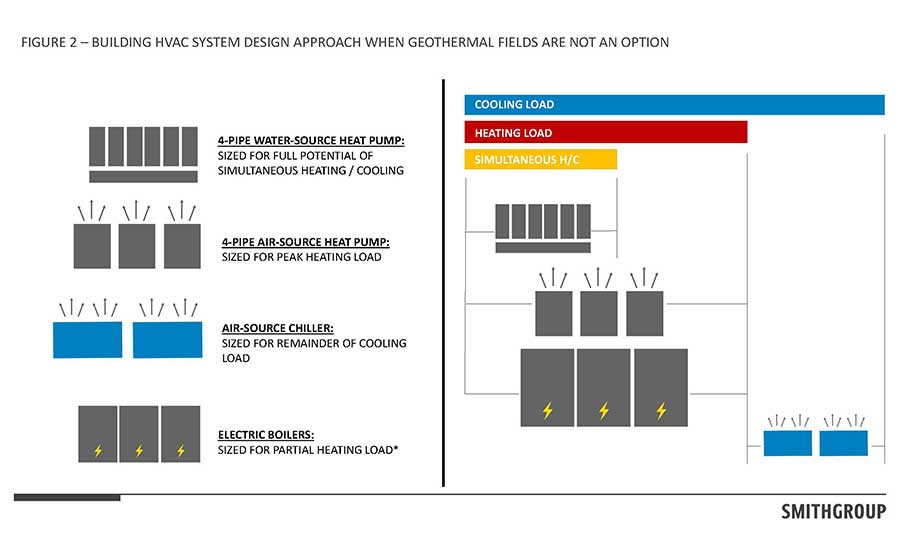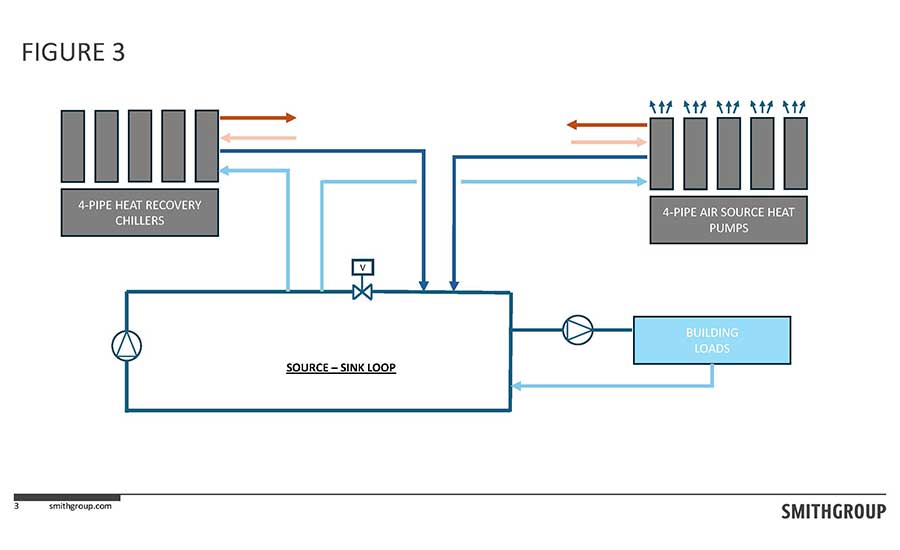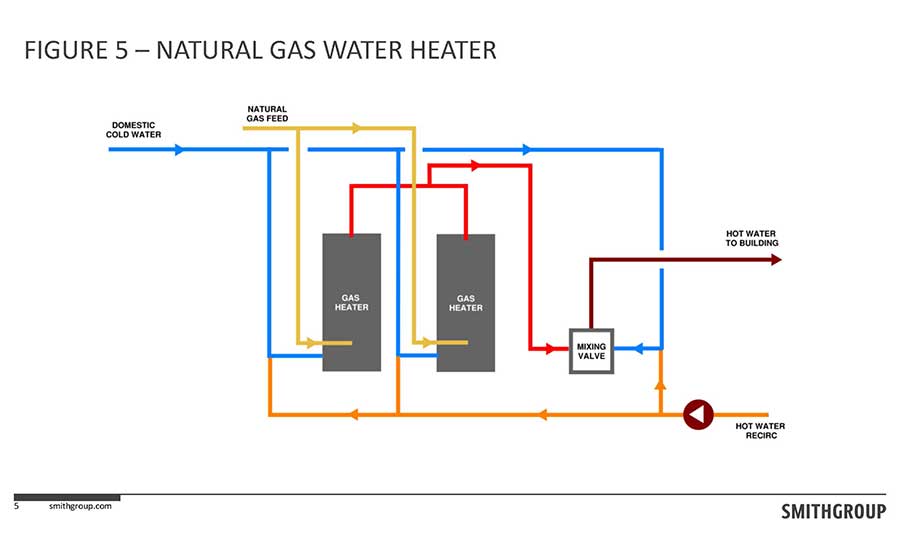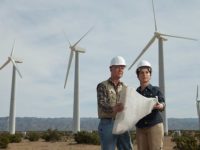One of the most compelling aspects of building electrification is its potential to operate entirely free from fossil fuels. By integrating electrically driven HVAC and domestic water heating systems, buildings can significantly reduce their reliance on nonrenewable energy sources. This shift is crucial in urban settings where the concentration of commercial buildings significantly contributes to overall energy consumption and carbon emissions. All-electric infrastructure is a pivotal step toward achieving net-zero emissions in the building sector, paving the way for a cleaner, more sustainable future.

Challenges
While electrification offers considerable environmental benefits, it also presents specific challenges that need to be addressed. One primary concern is the impact on the size of the building's electrical service, in particular when the project involves the installation of all-electric HVAC and plumbing systems in an existing building. Transitioning to all-electric systems often requires a substantial upgrade to existing infrastructure to handle increased loads, particularly in older buildings, where the original design did not account for such high power demands. These upgrades can be costly and complex, requiring careful planning and coordination with utility providers and local regulatory bodies.
Furthermore, the source of the electricity that powers the built environment plays a critical role in the environmental impact of electrification. Not all electricity is created equal; depending on the region, the electricity provided by utilities may still largely come from nonrenewable sources, such as the burning of coal or natural gas. Therefore, the emissions impact of electrifying commercial buildings heavily depends on the energy mix of the local grid. To maximize the environmental benefits, there is a pressing need for simultaneous advancements in renewable energy generation, such as solar, wind, and hydroelectric power, to ensure the electricity used is as green as the technologies it powers.

With this context in mind, it becomes essential to explore electrification technologies that can help commercial buildings transition away from fossil fuels while enhancing their energy efficiency. The following sections delve into relatively new design solutions, such as source-sink loops, six-pipe heat recovery chillers, four- and two-pipe air-source heat pumps, and heat pump domestic water heaters. These technologies are at the forefront of transforming commercial building infrastructures, optimizing energy use, and contributing to a sustainable architectural landscape.


Six-pipe heat recovery chillers
A six-pipe heat recovery chiller (aka six-pipe chiller heater) is an HVAC solution that enhances efficiency by providing the capability of hydronic heating or cooling while also offering the option to take advantage of “heat recovery” (transferring heat from one process to another). In addition, a heating or cooling circuit can exchange energy from a third, external hydronic source. This system includes six pipes (three supply connections and three return connections) that connect three distinct hydraulic circuits: the chilled water circuit, the hot water circuit, and a source/sink circuit. The core functionality of the chiller relies on its modular unit construction, as well as the ability to operate in multiple modes, either isolating the circuits for independent heating or cooling or integrating them for heat recovery purposes.
Technically — assuming all three circuits are active — the chiller employs a series of heat exchangers and reversible valves to manage the flow of a refrigerant, which absorbs heat from the chilled water circuit and rejects heat into the hot water circuit. In heat recovery mode, the system diverts waste heat — usually expelled to the environment in traditional systems — into the hot water circuit, which can be used for space heating or domestic hot water heating to improve the overall efficiency of the HVAC system. The source/sink circuit can interact with external or internal heat sources or sinks, such as cooling towers or geothermal fields, to further optimize thermal energy utilization.
Chiller operation is controlled by an advanced automation system that modulates the function of compressors, pumps, and valves based on real-time thermal loads and desired temperature set points. This control capability enables the chiller to dynamically adjust operating parameters to maximize energy recovery and minimize energy consumption.
System configurations
Figure 1 illustrates a system piping diagram where the source sink loop for the six-pipe chiller heaters utilizes a geothermal field. Depending on the geothermal field's size and capacity, additional heating or cooling sources may be required to stabilize the sink-source loop. When a geothermal field is not feasible, as depicted in Figures 2 and 3, alternatives such as two-pipe air source heat pumps, two-pipe air-source chillers and four-pipe heat recovery chillers can be employed. In this configuration, the four-pipe heat recovery chillers are precisely sized to manage simultaneous cooling and heating loads. Meanwhile, the two-pipe air-source heat pumps cater to the peak heating demands, and the two-pipe air-source chillers address either the peak cooling loads or the remaining cooling demands.
Air-source equipment limitations
It’s critical to recognize the limitations of relying solely on two-pipe or four-pipe air-source heat pumps to stabilize the sink-source loop. While operating in heating, air-sourced heat pumps will begin to lose capacity as ambient temperatures decrease (most manufacturers acknowledge this “derate” occurs below 40°F). This is due to the limitation of the equipment to extract heat from what is already (relatively) cold air. In addition to the derate associated with low ambient conditions, one must also account for the defrost cycle operation of any given circuit. Under certain outdoor air conditions (typically between 20° and 40°), ice buildup on the condenser coils can occur. To resolve this, the heat pumps must temporarily switch from heating to cooling mode to melt the ice, extracting heat from the sink-source loop during the process. The duration of this defrost cycle, including melting the ice and the lockout period, can extend up to 30 minutes or more. A robust strategy for ensuring the stability of the heating hot water supply temperatures must account for an auxiliary source of heating in these low ambient temperature ranges. One such strategy to mitigate the risk of heat source interruptions is the inclusion of electric boilers as a backup heating source (see Figure 4).
Building on the innovations discussed, we must consider how these systems can be fully integrated and optimized to improve energy efficiency in commercial buildings. The push toward full electrification, including HVAC and water heating systems, is not just a trend but a crucial step toward reducing our dependence on nonrenewable energy sources. This transition is particularly impactful in urban environments where commercial buildings are major contributors to energy consumption and carbon emissions. An entirely electric infrastructure is vital for achieving net-zero emissions in the building sector and fostering a more sustainable future.
Plumbing As part of the initiative to move away from fossil fuels and reduce carbon emissions, the industry is considering integrating domestic water heating systems into the grid. Traditionally, commercial buildings have been equipped with natural gas-fired, storage water heaters to meet their domestic hot water needs. In retrofit situations, this setup requires existing gas service and supportive building infrastructure. For new constructions, however, adding a natural gas service is becoming increasingly challenging, due to more restrictive building codes.

The natural gas phaseout
More than 10 states have adopted guidelines to phase out natural gas or are in the process of it, with many targeting net zero emissions by 2050. These regulations also include bans on "renewable natural gas" in some instances, reflecting a shift toward full electrification. This change is indicative of a national shift in domestic water heating practices.
Geothermal technology
Given this landscape, investments in geothermal technology and the implementation of source-sink loops not only provide energy savings but also protect against future regulatory changes and potential taxes or fees linked to fossil fuel usage. If an owner invests in a source-sink loop, incorporating the domestic hot water system into this loop becomes a natural and efficient option and should be considered a primary choice during the design phase.
Efficiency metrics
The coefficient of performance (COP) is a standard measure of the HVAC equipment efficiency, representing the ratio of heat output to power input. The COP for a standard electric resistance heater is 1, while a heat pump's COP typically ranges from 3 to 6. According to the U.S. Department of Energy (DOE), the uniform energy factor (UEF) is another standard that measures how much of the energy a water heater uses is directly converted into heating water. Gas-fired water heaters have a UEF range of 0.63 to 0.93, whereas heat pump water heaters typically range from 3.30 to 4.10 UEF, with water-source heat pumps at the higher end of this spectrum.
The drawbacks of heat pump systems
While heat pump systems offer greater efficiency, they also have significant drawbacks, such as requiring much larger storage capacities compared to gas-fired systems, which can achieve high recovery rates with minimal storage. In some cases, instantaneous gas heaters can be used without the need for storage, allowing for more efficient use of space in mechanical rooms. By contrast, heat pumps, with their lower heating rates, may require two to three times more storage capacity. This increased need for space could require four to five times more floor area in mechanical rooms.

System components
Swing Tank — Typically unstratified, the swing tank uses its own internal electric heating element to bring the temperature of recirculated hot water back up, thereby protecting the heat pumps from receiving higher temperature return water.
Heat pump water heaters (HPWH) — These units are most efficient when heating cold water. In the illustrated system, lower-temperature water from the bottom of Storage Tank 1 mixes with the cold domestic supply to efficiently feed the heat pumps.
Storage tanks — Given the slow heating rate of HPWHs, storage capacity should be carefully calculated.
Tankless water heater — Electric resistance, tankless water heaters can back up the heat pumps during periods of high demand from the domestic system.
Conclusion
The return on investment for these systems should be clearly communicated to clients, considering the significant upfront costs and space requirements. However, the long-term energy savings and alignment with regulatory trends provide substantial benefits.






